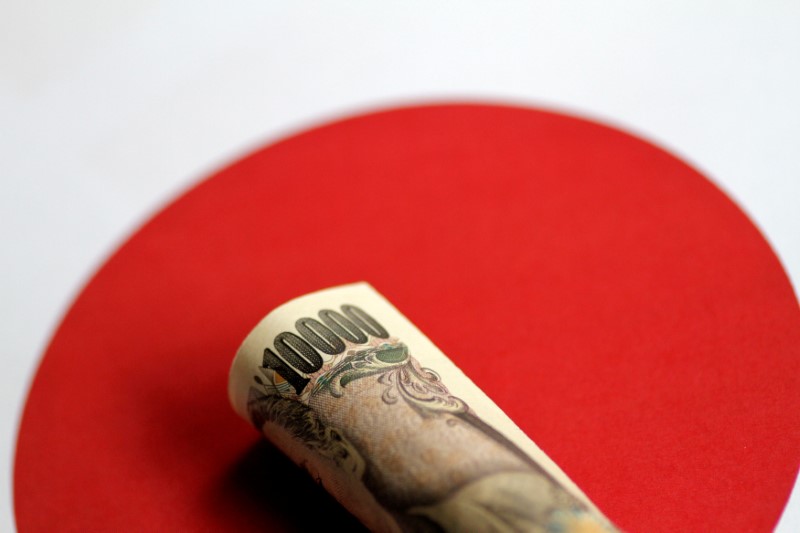Investing.com-- Most Asian currencies moved little on Friday as markets continued to fret over higher U.S. interest rates, while the yen came close to 10-month lows after the Bank of Japan maintained its ultra-dovish policy.
The dollar remained relatively well-bid in Asian trade, recovering a measure of overnight losses. The dollar index and dollar index futures rose about 0.1% each, and remained within sight of a six-month high hit earlier this week.
Yen weakens as BOJ reiterates dovish stance
The Japanese yen fell 0.4% to 148.16 against the dollar, and was trading just shy of its weakest levels since November 2022.
The Bank of Japan maintained short-term rates at negative 0.1%, and said it will continue with its monetary easing and yield curve control policies to foster economic growth.
The bank cited increased uncertainty over the Japanese economy, especially due to weakness in its biggest trading partners, as the main reason for maintaining its stimulative policies. The BOJ also said it will continue to target more wage growth and aim to help inflation reach its 2% annual target.
The decision came just a few hours after data showed Japanese consumer price index inflation grew slightly more than expected in August. A core reading, which excludes fresh food and fuel prices, remained pinned at an over 40-year high.
The BOJ statement disappointed some investors hoping for more cues on a potential pivot away from negative rates, given that Governor Kazuo Ueda had recently said that the bank had enough data to consider such a move.
Focus is now on an address from Ueda at 3:30 PM JST (02:30 ET) for any more cues on a pivot.
Broader Asia FX muted as Fed fears persist
Most other Asian currencies crept higher on Friday, but were still nursing steep losses for the week after the Federal Reserve warned that interest rates will remain higher for longer.
The Bank of England and the European Central Bank had also offered similar warnings.
China’s yuan rose 0.1% amid continued focus on stimulus measures in the country, while the Australian dollar added 0.1% as preliminary business activity data for September showed some resilience.
The Indian rupee rose 0.3% after being included in JPMorgan’s emerging market bond index, which is expected to attract more foreign inflows to the country. But sentiment towards India remained skittish amid a growing diplomatic row with Canada, after Prime Minister Justin Trudeau accused India of killing a Sikh secessionist leader on Canadian soil.
South Korea’s won added 0.4%, while the Indonesian rupiah and Philippine peso moved little after their central banks held interest rates as expected.
Still, the outlook for most Asian currencies remained bleak in the face of higher-for-longer U.S. rates. The Fed flagged one more potential rate hike this year, and flagged fewer than expected rate cuts in 2024.
